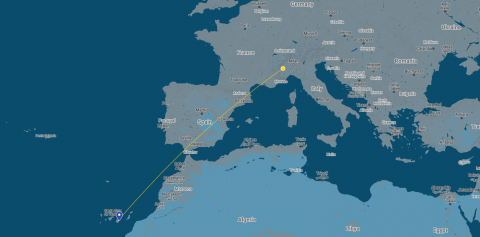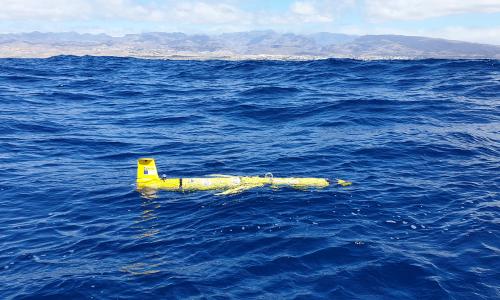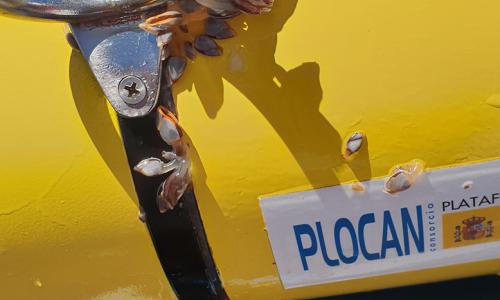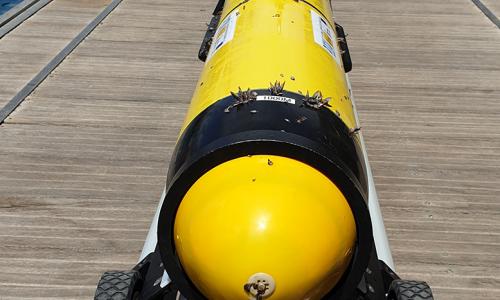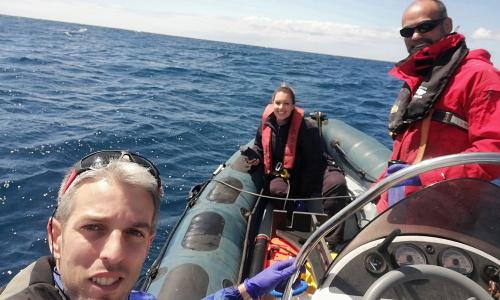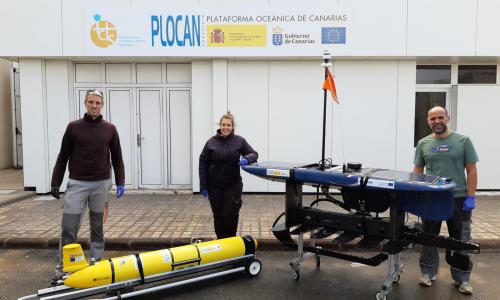Access/Technology provider: PLOCAN
End User: CNR-ISAC, National Research Council - Institute of Atmospheric Sciences and Climate
Dates: 27/02/2020 to 17/03/2020
GOAL: To study mesoscale structures, such as gyres or eddies, that are formed in the south of the island and the impact they have on the primary production of phytoplankton.
PLOCAN in collaboration with the Institute of Atmospheric Sciences and Climate (ISAC), belonging to the National Center for Scientific Research (CNR) of Italy, has carried out a mission in the southern waters of Gran Canaria to study mesoscale structures, such as gyres or eddies, that are formed in the south of the island and the impact they have on the primary production of phytoplankton.
In order to achieve this objective, two autonomous marine vehicles have been put into operation: a submarine (AUV), model Slocum G2 manufactured by the company TeledyneWeebResearch, capable of collecting oceanographic information in the water column, from the surface to 1000 meters of depth, and an autonomous surface vehicle (ASV), model Waveglider SV2 manufactured by the company LiquidRobotics, which collects both oceanographic information from the sea surface and meteorological information.
This access was carried out in collaboration with Dr. Antonio Olita (CNR_ISAC), to obtain oceanographic information (sea temperature, salinity, dissolved oxygen or chlorophyll) and meteorological (air temperature, relative humidity , atmospheric pressure or wind direction and intensity). In order to achieve the objective described above, the information generated in real time by the PLOCAN vehicles will be combined with information obtained through remote observation by satellite and information produced by numerical oceanographic models.

